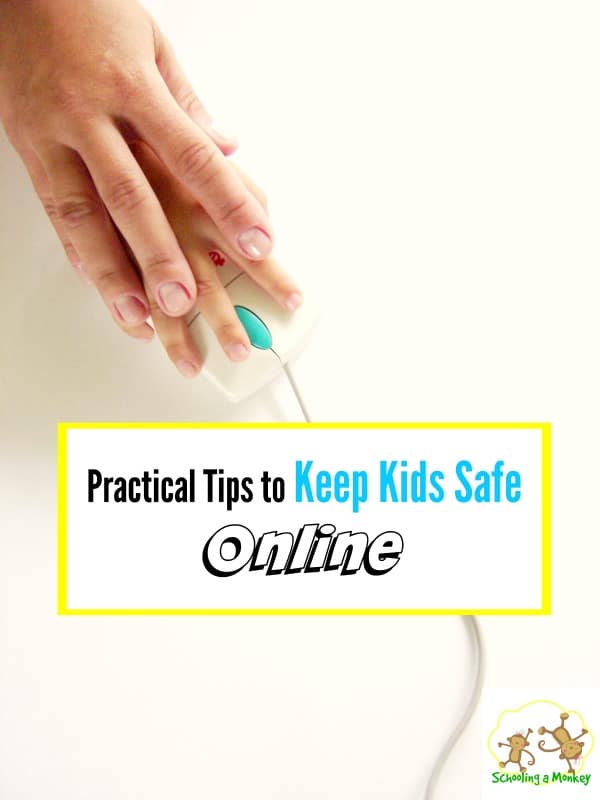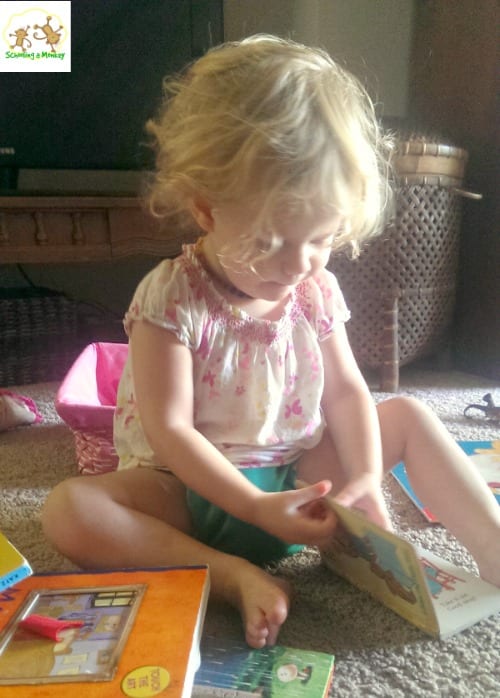This post is part of the 31 days of STEM activities for kids series. View the other posts here!
The online world is a lot like a knife. There are a lot of useful things you can do with it, but it is a dangerous tool. When I think about all the ways that children can get into trouble online, I panic a bit.
Of course, the online world isn’t going anywhere, so as parents; we must do what we can to help our children navigate the tricky and dangerous world of the Internet. We use the following tips to keep kids safe online.
9 Practical Tips to Keep Kids Safe Online
Teach Kids How to Use the Internet
The first thing that a child needs to know is how to use the Internet. A child should be able to sign on to an account, browse the Internet (safely, more on that below), know what a download is, an upload is, how to access a network, how to troubleshoot common Internet problems, how to identify high quality websites, and how to avoid spam sites.
Our children typically use the Internet to play games, research school topics, and complete some schoolwork. As they get older, we will show them more of the technical side of things so they can solve their own connection issues.
Add Parental Controls
I believe parental controls are important for safe online searching. I even use safe searches myself most of the time to avoid gross ads and spammy sites when I’m searching.
There are dozens of parental control options. Right now, we only use Google’s Safe Search option, but there are many other programs that add more protection from various sites. The Safe Search option is pretty good at preventing most graphic images and websites from popping up in searches, which at this point, is really all I’m concerned with.
You can also use Google’s Safe Search Kids for even greater protection while searching.
Discuss Proper Use
Children should be taught how to use the Internet properly. This includes items such as:
- Not opening e-mails from strangers
- Never clicking on e-mail links without permission
- Not clicking on ads
- Never downloading content without permission
- Notifying a parent if something goes wrong (an accidental download, for example)
Special emphasis should be placed on how anything posted online to social media accounts, e-mails, and even chat conversations can and probably will be there forever. It is difficult to delete things permanently. It is possible to access archived copies of websites that have been defunct for years, and social media accounts keep data for as long as you have the account and sometimes longer. Coach your children about watching their words extremely carefully when they are online (also a useful habit elsewhere in life).
Cyber bullying is another big issue with kids online, and discussing this often with your children can help both prevent them from being bullied and prevent them from bullying others.
Keep Things Open
I personally think children should not be allowed to use the Internet unsupervised. Kids and teens can get into a lot of trouble when they are left to their own devices. We don’t let Monkey use the computer with a closed door and I check on what she is doing periodically. Our computers are in main family areas and not in children’s bedrooms.
Protect Kids’ Identity
Children can get into a lot of trouble if they reveal personal information online. Teach your children about the importance of keeping their personal information safe. Children should never give personal information to strangers.
We use usernames for our children that are not similar to their real-life names just to keep things as safe as possible. Let your children know that it is important to keep things such as their age, address, name, gender (when possible), password information, and other personal details safe.
I had a scare a few months ago when someone in a game asked Monkey how old she was. She told the person before I could stop her. We had a long conversation about not revealing her age or other personal details after that! Luckily, the person didn’t ask for any other information.
Know Their Passwords
Children should not have any passwords that you don’t know. Teens will probably hate you for this one, but I would much rather have my kids mad at me than have them be in real danger.
Set Usage Limits
Just like with anything else, endless Internet usage isn’t good for children. Set clear usage limits on how long your children are allowed to be online each day. How much you allow your children to be online is up to you, but discuss the limits with your children in advance so they know what to expect.
Keep Track of Activity
Every so often, check in with your child’s accounts/browsing history to see what they have been up to. Usually when I do this, I find that Monkey has been researching Minecraft mods and construction techniques, but one day there might be something a little more concerning. Knowing what your kids do online is one more step to protecting their safety online.
Discuss Internet Etiquette
There are probably too many bits of Internet etiquette for me to get into right now, but children should at least be aware of certain etiquette elements, such as that all caps typing generally indicates shouting, and anything that isn’t accompanied by a smiley face or an exclamation point may be seen as rude or sarcastic.
You may also want to go over common abbreviations with your kids, although they aren’t used quite as often these days.
- BRB- Be right back
- LOL- Laughing out loud
- KK- Our favorite way to say OK, it is used in the gaming community
- QQ- Crying
- J/K- Joke or just kidding
- TTLY- Talk to you later
Kids Can Be Online Safely
Although it is a scary place, the Internet can also be an amazing place filled with knowledge and awesome. With a little guidance, you can keep kids safe online and relieve at least some of the worry that they are about to be kidnapped at any moment. 🙂
Don’t forget to check out the other awesome posts in the 31 days of STEM activities for kids series. And if you need even more practical tips, the 31 days of homeschooling tips for moms series has all the homeschooling advice you could ever need in one place!




